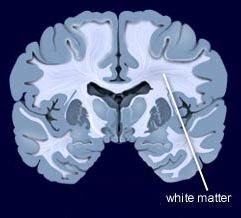LITHIUM’S AMAZING DIVERSITY OF ASSETS
Editor’s Note: Lithium is vastly underutilized. There is wide spread ignorance about its many assets and misconceptions about its few side effects. Here is an update that should be of interest to potential users, family members, and clinicians.
Lithium:
- Prevents unipolar and bipolar depression
- Augments effects of antidepressants in unipolar depression
- Potentiates the effects of atypical antipsychotics in treating mania and depression
- Reduces inflammation
- Normalizes some aspects of cardiovascular risk
- Normalizes secretions for monocytes and leukocytes
- Increases neurogenesis, BCl-2, and hippocampal and thalamic volumes
- The increases in neuroprotective factors occurs at brain levels below typical therapeutic dosages
- Protects against memory deterioration
- Lowers dementia risk in old age
- Reduces suicide clinically and at minute concentrations in the water supply
- Lengthens telomeres and increases longevity
- Reduces size of lesions in models of stroke, AIDS, and Huntington’s chorea
- Normalizes circadian rhythms
- Reduces manic-like behavior induced by clock gene mutations
- Prevents calcium currents and increased firing rate in stem cells from bipolar patients
- Induces minimal to no weight gain on long term follow up
- Does not increase risk of kidney failure when given at blood levels of .6 to .8 blood levels
- Protects against spine and hip osteoporosis
Conclusion: With so many assets and so few liabilities, physicians and patients should reconsider the benefits of lithium and use it more often, not only in the few who respond to it as a monotherapy, but as a adjunct to the many other treatments of bipolar disorder. This should be a “no brainer” as lithium will very likely help some have fewer problems from their illness and may even help them live longer.
Many of these points are summarized in the open access publication: Robert M Post, The New News About Lithium: An Underutilized Treatment in The United States, Neuropsychopharmacology accepted article preview 4 October 2017; several new updates have been added from the International Society on Bipolar Disorders meeting, Chicago, June, 2023.
Higher Brain Temperature in Youth Bipolar Disorder Using a Novel Magnetic Resonance Imaging Approach
Highlights from Posters Presented at the Society of Biological Psychiatry Meeting, April 27-29, 2023 in San Diego
Ben Goldstein of the University of Toronto reported that “Brain temperature was significantly higher in BD (bipolar youth) compared to CG (control group) in the precuneus. Higher ratio of brain temperature-to-CBF [cerebral blood flow] was significantly associated with greater depression symptom severity in both the ACC [anterior cingulate cortex] and precuneus within BD.”
These finding are of particular interest in light of the Unspecified Bipolar Disorder subtype called Temperature and Sleep Dysregulation Disorder (TSDD), where patients are over heated and respond to clonidine and other cooling techniques along with lithium and repeated intranasal ketamine insufflations.
DRAMATIC PROPHYLACTIC RESPONSE TO NIMODIPINE: A Case Report
(This is an invited contribution by Robert Westhead.)
This 50 year old man had a lifetime of incapacitating rapid cycling (10 days up and 10 days down) bipolar I disorder, but then for the past 4 years has had a complete remission on nimodipine (60mg QID). He remains on lithium (800mg), and of his other long-term medications, he has titrated quetiapine down from 800mg to 50mg and has discontinued phenelzine.
He had previously failed to respond to combinations of:
· Lithium
· Anticonvulsant mood stabilizers (including divalproex sodium, lamotrigine, carbamazepine and pregablin)
· Atypical antipsychotics (including quetiapine, aripiprazole and lurasidone)
· Antidepressants (including SSRIs eg citalopram and sertraline, NSRIs eg venlaflaxine and mirtazapine, and a MAOI eg phenelzine)
· Thyroxine
· Propranolol
· Clonazepam
He wanted to highlight this dramatic response to nimodipine in combination with lithium as this dihydropyridine calcium channel blocker is not well known or frequently used for its prophylactic effectiveness.
He noted that as well as stopping the rapid cycling, the nimodipine has provided complete relief from comorbid social anxiety symptoms and remediated cognitive and memory impairment.
This response to nimodipine potentially also has pathophysiological implications. Nimodipine directly blocks the CACNA1C calcium influx gene that has repeatedly been associated with vulnerability to depression, bipolar disorder, and schizophrenia in gene wide association studies. This patient does not know whether he carries this gene variant, but assays for it are routinely available as performed by the company Genomind.
Thus, it remains an open question as to whether those who have the CACNA1C variant would be more responsive to nimodipine compared to those without the variant. Certainly, the efficacy of this agent in treatment of patients with bipolar disorder deserves further consideration and study.
Two different subtypes of early onset unspecified bipolar disorder (USBD)
The first subtype is classical BP NOS (Not Otherwise Specified) having all the characteristics of full-blown bipolar disorder except for only having brief durations of mania and responding to conventional treatment. The second is what is now called Temperature and Sleep Dysregulation Disorder (TSDD) and was formerly described by D. Papolos as the Fear of Harm (FOH) syndrome, and requires a different treatment approach.
Clinicians should be alert to unique symptoms in children who might have TSDD as such a diagnosis would lead to a unconventional treatment paradigm. We emphasize the importance of specifically asking parents about evidence of over heating (red face and red ears) and high tolerance for cold (going outside markedly under-dressed) and the presence of fear of sleep and horrific nightmares, as these may lead one to consider the diagnosis of TSDD.
If these two novel aspects (temperature and sleep dysregulation) occur in the presentation of a highly fearful and behaviorally dysregulated child with bipolar-like symptoms, these may lead to the consideration of an unconventional treatment paradigm. It utilizes 1) high dose lithium; 2) clonidine and other practical approaches to achieve cooling and relieve over heating; and 3) ascending doses of intranasal ketamine (as described by Papolos et al 2013; 2018). This may be of considerable clinical importance as a large group of children with this unique presentation respond very poorly to conventional treatments for bipolar disorder and remain highly impaired and dysfunction throughout their childhood and adolescence.
If these children instead are treated with: lithium (to achieve blood levels of 1.0 meq/L or higher); clonidine (0.1- 0.3mg IR and 0.1mg ER at noon and HS) and other practical ways to achieve cooling; followed by ascending intranasal doses of ketamine (starting at 20mg and increasing toward 80-260mg/day, repeated every 2-3 days), marked improvement can be achieved. This occurs in conjunction with ketamine’s positive effects on fear and aggressive behaviors in association with its ability to reduce core body temperature.
We highlight this potential alternative treatment approach as long term positive effects have been achieved with it in open case series (Papolos et al 2013; 2018 ). The efficacy of this treatment approach has not been validated in controlled clinical trials, but we believe wider recognition of the two subtypes of USBD– BPNOS and TSDD,– will lead to more systematic research on treatment. Actively looking for the unique features of TSDD and pursuing its unconventional treatment may lead to long term positive effects in a child previously viewed as having an intractable psychiatric illness.
Lithium is a Lifesaver in Bipolar Disorder
Batya Swift Yasgur MA, LSW reported in Medscape Medical News on November 28, 2022 that “Mood stabilizers protect against suicide and all-cause mortality in patients with bipolar disorder (BD), including natural mortality, with lithium emerging as the most protective agent, new research suggests.
Investigators led by Pao-Huan Chen, MD, of the Department of Psychiatry, Taipei Medical University Hospital, Taiwan, evaluated the association between the use of mood stabilizers and the risks for all-cause mortality, suicide, and natural mortality in over 25,000 patients with BD and found that those with BD had higher mortality.
However, they also found that patients with BD had a significantly decreased adjusted 5-year risk of dying from any cause, suicide, and natural causes. Lithium was associated with the largest risk reduction compared with the other mood stabilizers.“
Lithium Corrects Circadian Rhythm Abnormalities in Bipolar Depression

At a recent scientific meeting, researcher Monica Federoff described new findings about lithium’s effects in people with bipolar I disorder, especially regarding circadian rhythms. The 12-week study included 386 participants with bipolar I. Some participants responded well to lithium, but even those whose bipolar disorder did not remit saw improvements in total symptoms, depressive symptoms, and manic symptoms.
Only those who were classified as good responders to lithium treatment showed improvement in circadian symptoms. Their depression improved in the direction of more “morningness,” and the authors suggested that “stabilization of circadian symptoms of depression may be an essential feature of lithium’s therapeutic effects in [bipolar] I patients.”
Dr. Post’s Recommendations For Treating Youth with Bipolar Symptoms
Our Editor-in-Chief, Dr. Robert M. Post, shares his personal recommendations for the treatment of children and adolescents with symptoms of bipolar disorder. Remember: Patients and family members must consult a physician about all information conveyed in the BNN. With the exception of lithium, none of the medications or supplements discussed above have been approved by the US Food and Drug Administration for use in children under 10. The findings reported here are in many cases preliminary and cannot be taken as recommendations based on the short summaries provided here. All treatment decisions must be made in conjunction with a patient’s treating physician, who is solely responsible for initiating any treatment discussed in the BNN or elsewhere.
In symptomatic and functionally impaired children, medication is almost always necessary. Many treating psychiatrists would start with an atypical antipsychotic, since there is clear evidence of the efficacy of such treatments. The side effects profile should be considered, as there is a considerable difference in the degree of weight gain associated with different atypical antipsychotics. The largest weight gains occur with olanzapine and clozapine, intermediate gains occur with aripiprazole and quetiapine, and the least gains occur with ziprasidone and lurasidone (and the latter has the advantage of being approved by the US Food and Drug Administration for the treatment of bipolar depression in children who are 10–17 years old). The addition of the diabetes drug metformin to decrease weight gain in people taking atypical antipsychotics is increasingly common.
The addition of an anticonvulsant medication (such as lamotrigine, carbamazepine/oxcarbazepine, or valproate) or the mood stabilizer lithium may be needed, as multiple studies indicate that combination treatment is typically needed in children (as in adults) to achieve a more complete response or remission.
Interestingly, oxcarbazepine was effective in younger but not older children with mania in a previous placebo-controlled study by Karen D. Wagner and colleagues published in the American Journal of Psychiatry in 2006.
Conversely, in a 2015 article in the journal JAACAP, researcher Robert Findling reported that in a placebo-controlled study of lamotrigine, 13–17-year-olds responded better than 10–12-year-olds.
Lithium treatment deserves consideration in children with classical presentations of bipolar disorder and those who have family members who have responded well to lithium treatment.
Lithium has the benefit of improving the white matter abnormalities seen in the brains of patients with early-onset bipolar disorder. Hafeman and colleagues reported in a 2019 article that children with bipolar disorder who were treated with lithium had better long-term results upon follow up than those treated with atypical antipsychotics or anticonvulsants.
There is much less scientific consensus about other adjunctive treatments for young people with additional bipolar symptoms and comorbidities, but this editor often uses several. Vitamin D3 is often low in children with psychiatric illness, and may improve mood and cognition.
The antioxidant N-acetylcysteine (NAC) helps depression, anxiety, and irritability, and is effective at treating habit-related behaviors such as trichotillomania (compulsive hair-pulling), obsessive-compulsive disorder (OCD), and drug use, including specifically reducing marijuana use in adolescents. A typical dose is 500–600 mg capsules, one capsule twice a day for one week, then two capsules in the morning and two in the evening thereafter.
Folate or folic acid may enhance antidepressant effects and those of lithium. In patients who have a particular low-functioning variant of a gene known as MTHFR, L-methylfolate is required instead of folate.
The widely-used supplement acetyl-L-carnitine (ALC) is poorly studied in children, but deserves consideration as a supplemental treatment for patients with histories of childhood adversity. In adults with depression, blood levels of ALC may be low, particularly in those with an early onset of bipolar symptoms and a history of childhood adversity (see a 2018 article by Carla Nasca in the journal PNAS). There is a modicum of evidence that ALC produces antidepressant effects in adults. ALC may also sensitize insulin receptors and normalize blood pressure.
There is increasing evidence of the role of inflammation in depression, mania, post-traumatic stress disorder (PTSD), and schizophrenia. Checking for abnormalities in inflammatory markers in the blood (especially Il-6 and CRP) may point the way to appropriate therapy with anti-inflammatory drugs such as minocycline (100 mg twice a day) or celecoxib (200 mg twice a day) in patients who do not respond fully to first-line medications.
Quetiapine Reduced Childhood Mania, Especially in Those with Thicker Frontal Temporal Regions
 In a symposium at the 2019 meeting of the American Academy of Child and Adolescent Psychiatry, researcher Melissa P. Delbello reported that six weeks of treatment with either lithium or quetiapine was effective in childhood mania, but quetiapine had a higher response rate of 71% versus 46% for lithium. Delbello found two types of structural changes on functional magnetic resonance imaging (fMRI). Some children had thicker frontal temporal regions, while others had thinning in these areas. The first group of patients had a 100% response to quetiapine, but only 53% of the second group responded to quetiapine.
In a symposium at the 2019 meeting of the American Academy of Child and Adolescent Psychiatry, researcher Melissa P. Delbello reported that six weeks of treatment with either lithium or quetiapine was effective in childhood mania, but quetiapine had a higher response rate of 71% versus 46% for lithium. Delbello found two types of structural changes on functional magnetic resonance imaging (fMRI). Some children had thicker frontal temporal regions, while others had thinning in these areas. The first group of patients had a 100% response to quetiapine, but only 53% of the second group responded to quetiapine.
In contrast, other researchers have found lithium superior to quetiapine. Vivian Kafantaris showed that patients who respond well to lithium show improvements in white matter abnormalities. Michael Berk and colleagues found that a year on lithium was superior to quetiapine on all measures including cognition and brain imaging in patients having their first episode of mania.
Lithium Effective for Maintenance Treatment of Childhood-Onset Bipolar Disorder
Evidence has been accumulating that lithium is effective in the treatment of young people with bipolar disorder. In a study by Robert Findling and colleagues published in the Journal of the American Academy of Child and Adolescent Psychiatry in 2018, participants aged 7–17 who responded well to lithium during a 24-week study were then randomized to receive either lithium continuation (17 participants) or placebo (14 participants) for 28 more weeks.
Those who continued lithium treatment were more likely to stay in the study. Participants who discontinued the study mostly reported that they did so due to re-emergence of their mood symptoms (mostly in the placebo group).
Lithium was well-tolerated and was not associated with any more weight gain than placebo. This study adds to the growing literature on the effectiveness and tolerability of lithium both acutely and in maintenance treatment in childhood bipolar disorder.
Lithium Better than Other Mood Stabilizers for Youth with Bipolar Disorder
A new study by Danella M. Hafeman and colleagues finds that lithium is superior to other mood stabilizers in young people. The data in this case come from 340 youth aged 7–17 who participated in a study known as Course and Outcome of Bipolar Youth (COBY).
At each visit over an average of 10 years, participants reported medications taken, symptoms they had experienced, etc. during the preceding six-month period. During times that participants had taken lithium (compared to other mood stabilizers) they were older, on fewer antidepressants, and they were less likely to have an anxiety disorder.
Those participants who took lithium had half as many suicide attempts, fewer depressive symptoms, less psychosocial impairment, and less aggression than those who took other mood stabilizers.
The researchers concluded, “Findings are consistent with adult studies, showing that lithium is associated with decreased suicidality, less depression, and better psychosocial functioning. Given the paucity of evidence regarding lithium in children and adolescents, these findings have important clinical implications for the pharmacological management of youth with bipolar disorder.”
Editor’s Note: Lithium should especially be considered in those with a family history of mood disorders, and in particular in those with a family history of good response to lithium. Lithium is under-prescribed in both adults and children and should be given much higher consideration in light of the multiple benefits it provides in addition to mood stabilization. These include maintenance of memory, increases in longevity (perhaps based in its ability to increase the length of telomeres, the bits of protective material at the end of DNA strands that deteriorate with age and illness), and neuroprotection against loss of gray and white matter volume in the brain, which often occurs in mood disorders.




